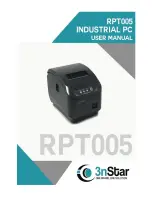
10
Important Safety Information
Introduction
All practical work areas and laboratories should be covered by local safety
regulations
which must be followed at all times
.
It is the responsibility of the owner to ensure that all users are made aware of
relevant local regulations, and that the apparatus is operated in accordance with
those regulations. If requested then Armfield can supply a typical set of standard
laboratory safety rules, but these are guidelines only and should be modified as
required. Supervision of users should be provided whenever appropriate.
Your
UOP4 MKII Solid/Liquid Extraction Unit
has been designed to be safe in use
when installed, operated and maintained in accordance with the instructions in this
manual. As with any piece of sophisticated equipment, dangers exist if the equipment
is misused, mishandled or badly maintained.
Before proceeding to install, commission or operate the equipment described in this
instruction manual we wish to alert you to potential hazards so that they may be
avoided.
Although designed for safe operation, any laboratory equipment may involve
processes or procedures which are potentially hazardous. The major potential
hazards associated with this particular equipment are listed below.
INJURY THROUGH MISUSE
INJURY FROM ELECTRIC SHOCK
INJURY FROM ROTATING COMPONENTS
IRRITATION FROM DUST WHEN HANDLING DRY MATERIALS
BURNS FROM COMPONENTS AT HIGH TEMPERATURES
INJURY FROM INCORRECT HANDLING
DAMAGE TO CLOTHING
Accidents can be avoided
provided that equipment is
regularly maintained
and
staff
and
students
are made aware of potential hazards. A list of general safety
rules is included in this manual, to assist
staff
and
students
in this regard. The list is
not intended to be fully comprehensive but for guidance only.
Please refer to the notes overleaf regarding the Control of Substances Hazardous to
Health Regulations.
General Safety Rules
1. Follow Relevant Instructions
a. Before attempting to install, commission or operate equipment, all relevant
suppliers’/manufacturers’ instructions and local regulations should be
understood and implemented.
Summary of Contents for UOP4 MKII
Page 1: ...SOLID LIQUID EXTRACTION UNIT Instruction Manual UOP4 MKII ISSUE 16 November 2010...
Page 4: ......
Page 7: ...Equipment Diagrams Figure 1 Front View of UOP4 MKII Solid Liquid Extraction Unit 3...
Page 8: ...Armfield Instruction Manual Figure 2 Side View of UOP4 MKII Solid Liquid Extraction Unit 4...
Page 9: ...Equipment Diagrams Figure 3 UOP4 MKII Schematic Diagram Showing 3 Stage Process 5...
Page 10: ...Armfield Instruction Manual Figure 4 UOP4 MkII Console Front View 6...
Page 11: ...Equipment Diagrams Figure 5 UOP4 MkII Console Rear View 7...
Page 12: ...Armfield Instruction Manual Figure 6 PCB Connections 8...






































